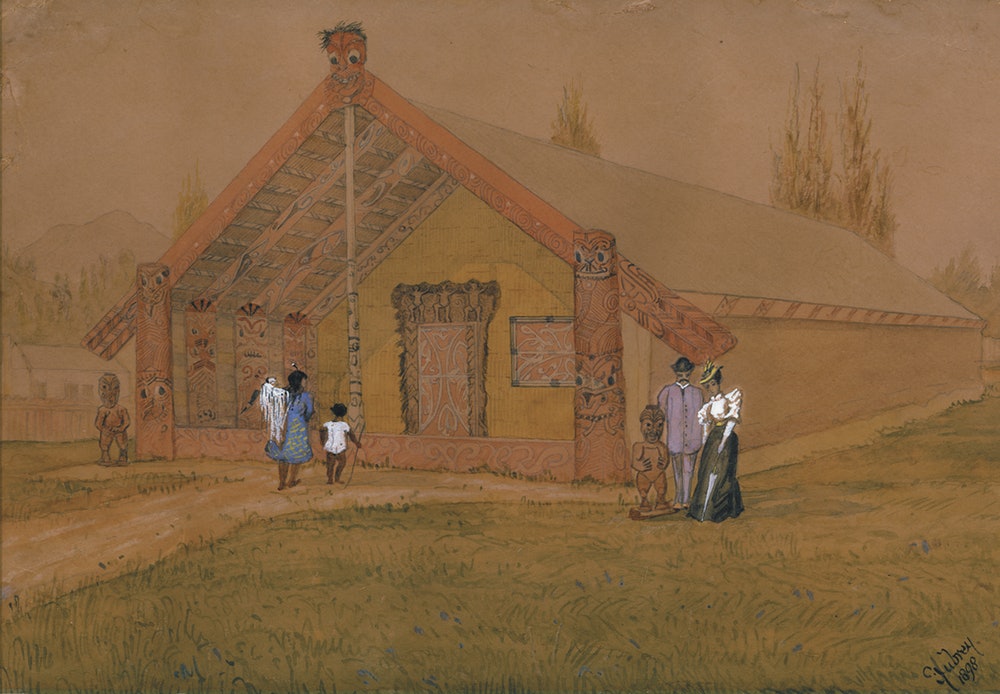1. Whare Tupuna - Ancestral House
View Map map
You’re standing in front of Hotunui – a whare tupuna or ancestral house. Whare like this one are representations of tūpuna or ancestors which is why they have names. Hotunui was an ancestor of the Ngāti Maru tribe and this house belongs to them. Look up at the mask at the peak of the house. This is called a koruru and represents Hotunui himself. Hotunui was built near Thames in 1878, after the arrival of Europeans. This superbly carved whare tupuna is a fine example of 19th century carving, fashioned by Ngāti Awa experts as a wedding gift.
Let’s go inside – but don’t forget to remove your shoes first. You’re about to enter a tapu or sacred space. You might want to pause the audio while you remove your shoes.
Before you step over the paepae into the porch look up at the maihi or sloping boards – these are wide-open arms welcoming you inside. Keep going inside, take a moment to experience the power and beauty of Hotunui. Every surface contains stories, traditions, and histories – a vivid expression of the identity of the people who own this whare.
Did you see the bright flashing eyes of the poupou watching over you? These carved posts on the walls are human ancestors too. Except for one. The fifth carving on the left-hand side as you enter is the marakihau or spiritual guardian Ureia. Ureia was a friend of Ngāti Maru and warned them of danger and approaching war parties. See the fish in his hand? Look closely at the ancestor to his right – his names have been painted on to the carving, adding a written layer to the oral stories held by the carvings.
Now look at the panels in between the carved posts. These are called tukutuku. Then gaze up at the painted rafters called kowhaiwhai. These patterns connect the human stories in the carvings with the natural world. The pattern on the right of Ureia is called nihotaniwha – or teeth of the taniwha.
Walk to the end of the whare and find the tukutuku pattern that looks like steps – this is the poutama and symbolises family connections and learning.
Whare are still the most important buildings, and continue to be used for meetings, funerals, and to entertain visitors.
It’s time to leave Hotunui. Go outside, take a moment to put your shoes back on. Then head to stop 2, the pātaka or storehouse – the raised house to your right as you leave Hotunui.
